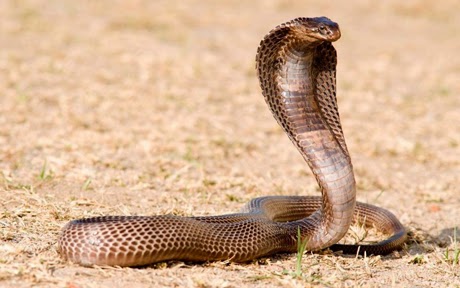1. While plants and fungi only contain a single type of toxin, snakes often utilise a mixture, making it much more difficult to treat.
2. While plant or mushroom poisons have to be ingested, snake toxins are forcibly injected into your system.
The likelihood of you dying from a snake bite is pretty much proportional to how good your country's infrastructure is. For example in North America only about 5 people per year die of snake bites, however about in India and Pakistan there are about 50,000 to 70,000 deaths per year due to snake bites. We can tell that this is not just due to a differing number of poisonous snakes as Australia, the country with the greatest concentration of poisonous snakes has one of the lowest snake death rates.
So why is there such a discrepancy in the snake bite mortality rates. Well as with all medicine speed of response is absolutely essential, and a good infrastructure improves this. Snake bites also require adept medical professionals to treat, as I have mentioned they contain many different types of venom. North American rattlesnakes, for example, utilise at least nineteen different types of toxin. In many cases these toxins can work in a sort of perverse harmony, increasing each others' damage and rapidity of action.
Toxins have two main ways of killing:
1. Neurotoxins: As you may have guessed neurotoxins act on the neurons. Neurotoxins are chemical agents that affect the transmission of chemical signals between neurons. Neurotoxins affect this process in a number of different ways. They may block receptors, stopping the flow of transmission, or damaging microtubules or vesicles which carry the chemical messages. This can lead to death by asphyxiation, as chemical communication in the lungs and diaphragm is restricted, obstructing ability to breathe.
2.De-clotters: Ok, that 's a made-up word, but I couldn't find the technical term for this. Basically the toxin stops your blood clotting, giving you a sort of impermanent haemophilia, meaning you could actually bleed to death through the bite. The toxin may do this by inhibiting the action of coagulases. These are enzymes that convert fibrinogen into fibrin, which forms the thread of the clots. If these enzymes do not function, the blood will not clot.
So how do we stop this? Antivenoms are the answer. Antivenoms are actually types of 'two-layer' vaccines. First the animal from which the venom comes has to be milked for its venom. The venom is then diluted to non-lethal levels and injected into an animal (a rabbit for example). The rabbit produces an immune response to the venom. These antibodies are then collected and injected into the person, defending them against the venom.
The availability of antivenoms and the speed with which they can be received are the main factors affecting how safe you are, although not being around particularly poisonous snake infested areas cant hurt.
Until next time people!

No comments:
Post a Comment